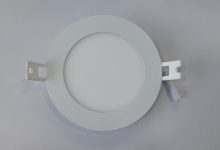How to Use an Ovulation Detector to Maximize Your Chances of Conception
How to Use an Ovulation Detector to Maximize Your Chances of Conception

For couples trying to conceive, understanding ovulation is crucial. Ovulation is the process during which a mature egg is released from the ovary, making it available for fertilization. Knowing when ovulation occurs can significantly increase the chances of conception. This is where ovulation detectors, such as Ovulation Predictor Kits (OPKs) and ovulation saliva tests, come into play. These tools help identify the fertile window, making it easier to time intercourse for conception.
Understanding Ovulation and the Fertile Window
Before diving into how to use ovulation detectors, it’s important to understand the basics of ovulation and the fertile window. The menstrual cycle typically lasts between 28 to 32 days, although it can vary from woman to woman. Ovulation generally occurs around the midpoint of the cycle, about 14 days before the start of the next period.
The fertile window is the time during the menstrual cycle when a woman is most likely to conceive. It usually spans six days: five days leading up to ovulation and the day of ovulation itself. Sperm can live inside a woman’s body for up to five days, while the egg is viable for about 12 to 24 hours after release. Therefore, having intercourse during this fertile window increases the chances of conception.
What Are Ovulation Predictor Kits (OPKs)?
Ovulation Predictor Kits (OPKs) are one of the most popular tools for detecting ovulation. These kits measure the levels of luteinizing hormone (LH) in your urine. LH is a hormone that surges right before ovulation, triggering the release of an egg from the ovary.
How to Use an OPK Fertility Test
- Choose the Right Time: Start testing a few days before you expect to ovulate. If your cycle is 28 days long, begin testing around day 10 of your cycle (with day 1 being the first day of your period). Continue testing daily until you detect an LH surge.
- Collect Your Urine Sample: Most OPKs come with test strips that are either dipped directly into a urine sample or held in the urine stream. Follow the instructions provided with your specific kit.
- Read the Results: After a few minutes, the test will show a result. A positive result indicates that your LH levels have surged, meaning ovulation is likely to occur within the next 24 to 36 hours. This is your fertile window, so plan to have intercourse during this time.
- Track Your Cycle: Keep track of your test results along with other signs of ovulation, such as changes in cervical mucus and basal body temperature (BBT). This will help you understand your cycle better and improve your chances of conception.
Using Ovulation Saliva Tests
Another effective method of detecting ovulation is through an ovulation saliva test. This test works by analyzing the patterns of dried saliva. As ovulation approaches, increased estrogen levels cause a change in the composition of saliva, which can be observed under a microscope.
How to Use an Ovulation Saliva Test
- Purchase a Microscope: Ovulation saliva tests require a small microscope that allows you to view the crystallization pattern of your saliva. These microscopes are specifically designed for fertility purposes and are available online or at pharmacies.
- Collect Your Saliva Sample: The best time to collect a saliva sample is first thing in the morning, before eating, drinking, or brushing your teeth. Use a clean finger or a cotton swab to place a drop of saliva on the microscope’s lens. Allow the sample to dry completely.
- Examine the Pattern: Once the saliva has dried, look through the microscope. During most of your cycle, the saliva will dry in a random pattern. However, as ovulation approaches, the saliva will form a distinct fern-like pattern, indicating increased estrogen levels.
- Timing Intercourse: When you see the fern pattern, it’s a sign that ovulation is near, usually within 24 to 72 hours. This is the optimal time for conception, so plan to have intercourse during this period.
Combining Methods for Greater Accuracy
While both OPKs and ovulation saliva tests are effective on their own, combining these methods can provide a more comprehensive picture of your ovulation cycle. For instance, you can use an OPK to detect the LH surge and confirm the results with an ovulation saliva test. This dual approach increases your chances of accurately identifying your fertile window.
Additional Tips for Maximizing Conception
- Monitor Cervical Mucus: In addition to using OPKs and saliva tests, pay attention to changes in cervical mucus. As ovulation approaches, cervical mucus becomes clear, stretchy, and similar to egg whites, which facilitates sperm movement.
- Track Basal Body Temperature (BBT): BBT tracking involves taking your temperature every morning before getting out of bed. A slight increase in BBT indicates that ovulation has occurred. Although BBT rises after ovulation, tracking it over several cycles can help predict future ovulation dates.
- Maintain a Healthy Lifestyle: A balanced diet, regular exercise, and avoiding harmful substances like alcohol and tobacco can improve fertility. Both partners should focus on maintaining a healthy lifestyle to increase the chances of conception.
- Consult a Healthcare Provider: If you have irregular cycles or have been trying to conceive for over a year without success (or six months if you’re over 35), consider consulting a healthcare provider. They can offer further testing or treatment options.
Addressing Common Concerns
- Irregular Cycles: Women with irregular menstrual cycles may find it challenging to predict ovulation. In such cases, using ovulation detectors like OPKs and saliva tests can be particularly helpful. Tracking your cycle over several months can also reveal patterns, even if they’re irregular.
- False Positives/Negatives: While OPKs and saliva tests are generally accurate, they’re not foolproof. Certain medications, medical conditions, or even stress can affect test results. If you’re consistently getting unexpected results, consult a healthcare provider.
- Cost and Accessibility: OPKs are widely available and relatively affordable. Ovulation saliva tests, while initially more expensive due to the cost of the microscope, can be reused, making them cost-effective in the long run. Consider your budget and preferences when choosing a method.
Conclusion
Using an ovulation detector, whether an OPK fertility test or an ovulation saliva test, can significantly increase your chances of conception by helping you accurately identify your fertile window. By combining these methods with other natural signs of fertility, such as cervical mucus changes and basal body temperature, you can create a comprehensive approach to understanding your cycle.
Remember, patience and persistence are key when trying to conceive. It may take a few cycles to become familiar with your body’s signals, but with the right tools and knowledge, you can maximize your chances of achieving pregnancy.








